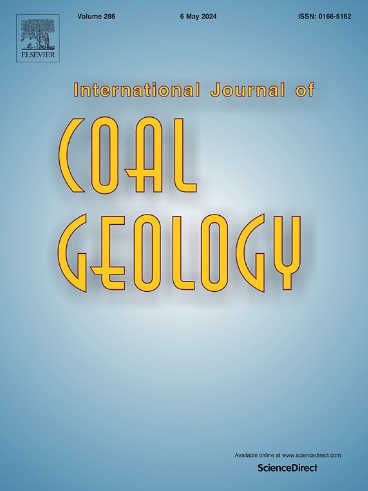Dynamic evolution and differential enrichment of deep coalbed methane: A case study in Qinshui Basin
IF 5.6
2区 工程技术
Q2 ENERGY & FUELS
引用次数: 0
Abstract
Gas content is a critical factor in evaluating the resource potential and predicting the productivity of deep coalbed methane reservoirs. This study investigates the evolution of gas content in deep coal reservoirs over geological time and explores models of differential gas enrichment. Using Carboniferous-Permian deep coal reservoirs in the Yushe-Wuxiang block of the Qinshui Basin as a case study, fluid inclusion analysis, basin modeling, and theoretical gas content calculations were combined to quantitatively reconstruct the pressure and gas content evolution during the uplift of these coal reservoirs. Fluid inclusion analysis revealed homogenization of temperatures ranging from 85 °C to 155 °C in the coal-bearing strata, indicating trapping pressures between 33.16 MPa and 46.42 MPa. These inclusions were trapped between 228.05 and 216.09 million years ago, coinciding with the period of maximum burial depth, and exhibit a pressure coefficient of 1.05–1.19, confirming an overpressure state. During the uplift phase, decreasing temperature and pressure led to the conversion of free gas into adsorbed gas. This transition resulted in a gradual increase in adsorbed gas content while free gas content declined. Intense tectonic activity during the Himalayan orogeny induced fracturing and depressurization of the coal reservoirs, causing substantial dissipation of free gas. Consequently, the deep coal reservoirs in the Yushe-Wuxiang block currently exist at normal pressure and are devoid of free gas. Comparative analysis of gas content and reservoir pressure evolution across different blocks led to the proposition of four distinct coalbed methane enrichment models: (1) deep burial and weak tectonic reworking, (2) deep burial and intense tectonic reworking, (3) shallow burial and weak tectonic reworking, and (4) shallow burial and intense tectonic reworking. The deep burial and weak tectonic reworking model are identified as a promising target for coalbed methane exploration and development in North China. This study elucidates the mechanisms responsible for differential gas content enrichment in deep coal reservoirs, providing valuable insights for guiding the exploration and development of deep coalbed methane resources.
深层煤层气动力演化与差异富集——以沁水盆地为例
含气量是评价深层煤层气资源潜力和预测产能的关键因素。研究了深部煤储层含气量随地质时间的演化规律,探索了差异富集模式。以沁水盆地玉树—五乡区块石炭系—二叠系深层煤储层为例,结合流体包裹体分析、盆地建模、理论含气量计算等方法,定量重建了这些煤储层隆升过程中的压力和含气量演化。流体包裹体分析显示,含煤地层温度均一化范围为85℃~ 155℃,圈闭压力范围为33.16 MPa ~ 46.42 MPa。包裹体发育于2.2805 ~ 2.1609亿年前,与最大埋深时期一致,压力系数为1.05 ~ 1.19,处于超压状态。在抬升阶段,温度和压力的降低导致游离气转化为吸附气。这种转变导致吸附气体含量逐渐增加,而自由气体含量下降。喜马拉雅造山运动期间强烈的构造活动导致煤储层破裂降压,导致大量游离气耗散。因此,玉树—乌乡区块深部煤储层目前处于常压状态,缺乏游离气。通过对不同区块含气量和储层压力演化的对比分析,提出了4种不同的煤层气富集模式:(1)深埋弱构造改造模式、(2)深埋强构造改造模式、(3)浅埋弱构造改造模式、(4)浅埋强构造改造模式。深埋弱构造改造模式被认为是华北地区煤层气勘探开发的有利靶区。该研究阐明了深部煤储层含气量差异富集机理,为指导深部煤层气资源勘探开发提供了有价值的见解。
本文章由计算机程序翻译,如有差异,请以英文原文为准。
求助全文
约1分钟内获得全文
求助全文
来源期刊

International Journal of Coal Geology
工程技术-地球科学综合
CiteScore
11.00
自引率
14.30%
发文量
145
审稿时长
38 days
期刊介绍:
The International Journal of Coal Geology deals with fundamental and applied aspects of the geology and petrology of coal, oil/gas source rocks and shale gas resources. The journal aims to advance the exploration, exploitation and utilization of these resources, and to stimulate environmental awareness as well as advancement of engineering for effective resource management.
 求助内容:
求助内容: 应助结果提醒方式:
应助结果提醒方式:


